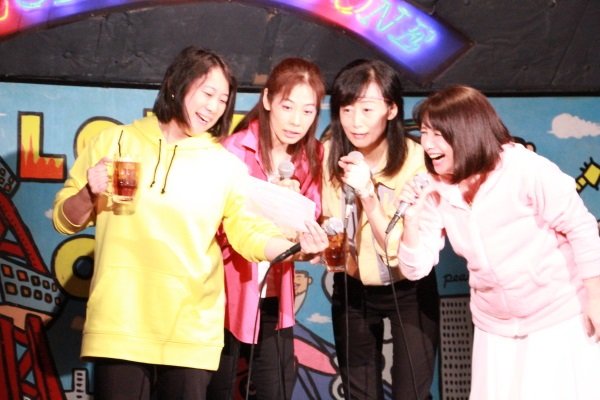
12:00 JST, July 8, 2022
Since last year, I have been giving lectures on newspapers at Kyoritsu Women’s University’s Faculty of Arts and Letters. Through this connection, I was given an opportunity to speak in late June at the university’s monthly study meeting for students. The faculty member in charge told me that any subject was welcome, so I gratefully took the opportunity to talk about the following theme: “History of battling heroines: Super Sentai series and their times.”
In fact, I had done detailed research on this subject before I published a book on tokusatsu sci-fi superhero TV shows in 2015. So I thought there wouldn’t be many new discoveries this time. I was completely wrong. Digging deep from the viewpoint of 2022, I also made many rediscoveries that made me say, Wow. It was really fun preparing for the lecture.
What surprised me most during my prepwork was the change in the position of women in Japanese society over the past 50 years. The first battling heroine in the Super Sentai series of tokusatsu TV shows was Momorenger. She appeared as a member of the superhero team in “Himitsu Sentai Gorenger” that aired from 1975. That year was the International Women’s Year during which the first U.N. world conference on women took place. In Japan, too, there was a government-led conference on women’s issues. I read newspaper articles from the time in detail and found that society was still largely indifferent or even half-ridiculing the topic of women’s advancement in society. The government set up a council for dealing with women’s issues, but its members were all men, which is unthinkable now. Worse still, some companies had rules that forced women to retire by the age of 35.
Ten years later, the Equal Employment Opportunity Law was enacted, making clear that discrimination against women was illegal. As if to keep in step with the times, “Chodenshi Bioman” featured two female members, one clad in pink and the other in yellow, on the five-member superhero team. It was a significant step forward to have more than one woman on a team. When there was only one female member, her most important role was being a woman. Now that there were two women, they had more points to make: what kind of women they were and what kind of fighters they were.
The atmosphere in society completely changed as well. You could still hear the voices of confused men in newspaper articles of the time, but they had a considerably smaller amount of derision and mockery of women.
The trend toward equality of the sexes continued into the 21st century. In recent years, there have been various types of female leads in the Super Sentai series, once different from stereotyped women characters of the past, such as a generally kindhearted girl who is also a bit of a tomboy. Changes have spread to other elements of the shows as well. Pink, which used to be the color of a female superhero team member’s costume and also part of her name, is given to one of the male leads in “Abataro Sentai Don Brothers,” the 46th and latest show of the Super Sentai series, which is currently on air.
Ah, I realized again that, although it may look like things don’t change, society does change.
At the lecture, I quickly introduced to the students something like the above. To be honest, I was unsure how much my lecture, which focused on the series, reached the hearts and minds of an audience of female students. But they were a lively bunch and came up with interesting questions: “The anime ‘Sailor Moon’ depicts battling heroines. What do you think of that?” or “What do you make of the fact that battle scenes in the ‘Pretty Cure’ series have shifted from hand-to-hand combat early in the series to battles using weapons?” Beyond doubt, I was able to spend a fun and inspiring afternoon that weekend.
I don’t know how many of the students were interested in the Super Sentai series or the tokusatsu superhero genre. But I hope that the potential for change those heroines have shown will leave their mark in the students’ hearts. It may just be a little push, but I hope it gives them courage when they go out into society.
"Culture" POPULAR ARTICLE
-

Van Cleef & Arpels Dazzles with Art Deco Artisanry at Tokyo Exhibit
-

Disney’s ‘Twisted-Wonderland’ Animated Series Puts Villains in Spotlight: New Show Features School Inspired by Classic Disney Films
-

Japan Plans to Distribute Manga Overseas Via New Platform
-

Japanese Craftsman Produces Beautiful and Durable Bags Made of Wood
-

Ayumi Hamasaki’s Shanghai Concert Canceled Day Before Schedule as Part of Beijing Backlash
JN ACCESS RANKING
-

Keidanren Chairman Yoshinobu Tsutsui Visits Kashiwazaki-Kariwa Nuclear Power Plant; Inspects New Emergency Safety System
-

Imports of Rare Earths from China Facing Delays, May Be Caused by Deterioration of Japan-China Relations
-

University of Tokyo Professor Discusses Japanese Economic Security in Interview Ahead of Forum
-

Japan Pulls out of Vietnam Nuclear Project, Complicating Hanoi’s Power Plans
-

Govt Aims to Expand NISA Program Lineup, Abolish Age Restriction


























